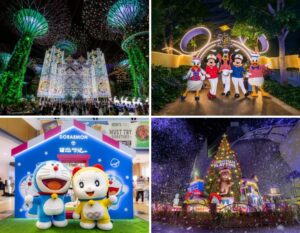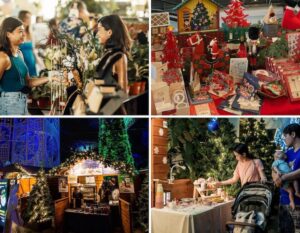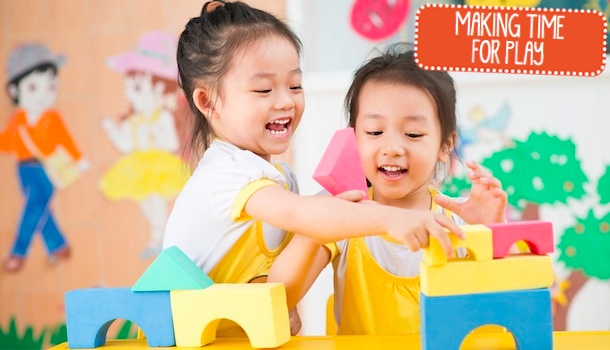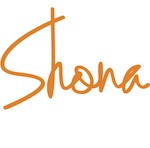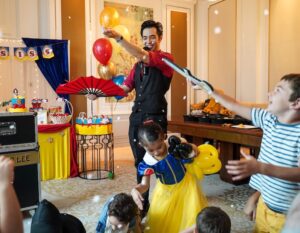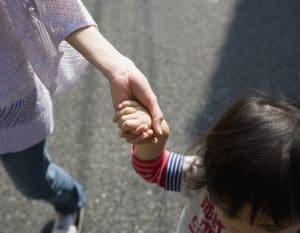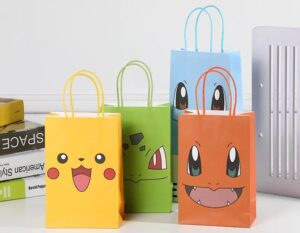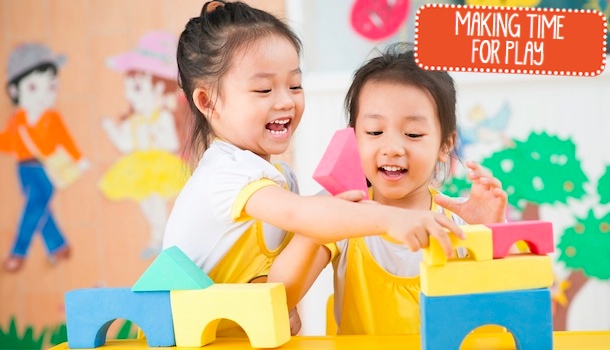
Our little ones know just how important it is to play. As parents we know just how important this is but sometimes it can feel as if there is just not enough time in the day for play! We spoke with early childhood expert, Shona Sanosi of Blue House Nursery and International School to get her advice on how to create meaningful play opportunities for our kids.
What types of toys work best for young children? What attributes should I be looking for in ‘good’ toys?
There is a place for toys in a child’s life, however many toys limit a child with their set and expected usage. Children will often look at the picture on the box or, when they are older, read the instructions and follow what they see, thus restricting their imagination and creativity.
Try to limit the amount of toys that you have at home for your child; pick a select few that offer more than one element and that can be mixed, matched and combined with other things, thus making it more ‘open ended’ in possibilities.
Also, resist the temptation to have too many toys. Clutter and over stimulation can often overwhelm a child’s creativity and can discourage them from investigating the number of items in front of them.
It’s a great idea to rotate the toys you do have by not having them all out at the same time. It keeps your child guessing, which will provoke more interest and ultimately, more learning opportunities.
What are ‘open-ended’ toys and why are they good for my child?
Open-ended toys are simply items that a child can play with in more than one way. At Blue House for example, we use many open-ended materials like cloths, leaves, twigs or bottle tops for example and mix them with more traditional materials such as buckets, building blocks and water. This way children are exposed to endless possibilities to build, float, empty, fill, cover or uncover etc.
When purchasing toys, look for items that will help support and develop more than one area of a child’s development. A great example is a puzzle or shape sorting box as this will help a child with their fine motor skills, hand eye coordination, shape recognition, pre-mathematical skills and also language and literacy as the child starts to name the pieces and increases their vocabulary.
Lego or building bricks of any sort are also great for fine motor skills, coordination, creativity and imagination and can also be a wonderful tool for social interaction and learning skills such as negotiation and sharing.
Interestingly, my own children who have come through a creative schooling system, do not like the types of Lego where you are expected to build a certain type of vehicle or structure but prefer to have a basket full of different pieces and wheels so they can create their own. I believe it’s our role as parents and educators to ensure that children are given enough opportunities to be creative, problem solve and be rewarded for their efforts and processes.
What is the best way to organise my child’s toys? I want to control the clutter but still give them the space they need to play.
As your child grows older you will often find toys taking over your home and before long they can also take over your living space! At certain times of the year, like just before Christmas or your child’s birthday for example, it’s best to declutter and sort out what you have in order to make room for the inevitable new gifts!
Try to have some open shelving and baskets to display and store your child’s toys as these will not only look nice in your home but will also provide opportunities for your child to access the materials themselves and choose what they would like to play with.
If space permits try to ensure that your shelving acts as a display unit as opposed to a closed storage unit that looks cluttered and uninviting. It’s best to have a separate closed cupboard where you store excess toys and equipment so you can rotate them periodically.
How can I create a meaningful play space for my child? What’s the best way to set up their space?
You child’s environment should invite curiosity and discovery. At home this can be achieved through careful planning, with open uncluttered shelving, plain flooring, plants, soft furnishings and homely touches. It’s worth noting that your child’s play area should not necessarily be an excluded place that looks different from the rest of the house, but that it should be a part of your home and a place that both you and your child feel comfortable to spend time in.
Interestingly enough, children often get the most enjoyment out of ‘toys’ found in your very home – think wooden spoons, saucepans, sponges, buckets, cooking aprons and the like!
What is the best way to play with my child?
Parents play an important part in this process, by providing an inspiring environment and playing and learning alongside their child. I believe parents need to be observers, spend time watching their children, following and extending on their environments. It’s best to keep in mind that you do not need to ‘teach’ your child to play! In fact, it’s your child that will teach you! If you observe and watch you’ll learn everything you need to learn about what your child is interested in and how he or she wants to engage with you.
Any other advice?
Try to always give your child enough space and time to discover and explore by themselves. It’s important that children are given uninterrupted periods of time to play and not to feel rushed or pressured to pack away and move onto the next activity.
Where possible give your child the opportunity to revisit their play experiences. As tempting as it may be to put aside an art project in progress, leave it around for a few days and you might just find your child going back to it, questioning and building upon their earlier work!
A UK native, Shona Sanosi holds the NNEB qualification and has over 20 years experience working with young children and their families. In addition to being the School Director at Blue House Nursery and International School, Shona continues to work with and partner families as an Early Years Advisor. It was in 2007 that Shona began researching more about the Reggio Emilia Approach to early years education and with this investigation (plus the arrival of her curious and creative twins, Ella and Alfie in 2006) came a renewed energy inspiring Blue House Nursery and International School, the first Reggio Emilia Inspired School in Singapore with a fully emergent curriculum for children aged 18 months to 6 years.






 View All
View All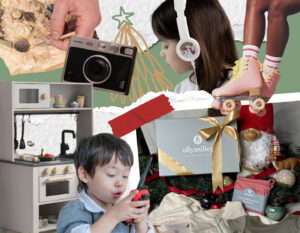
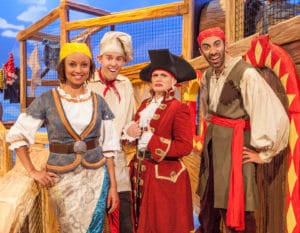



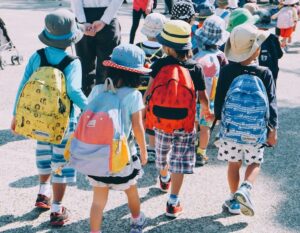
 View All
View All


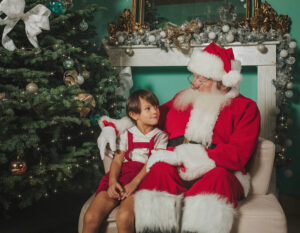





 View All
View All